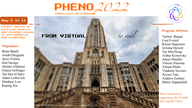Conveners
BSM II
- Joel Walker (Sam Houston State University)
We study the muon electric dipole moment(EDM) in models with chiral enhancement, in which the long-standing muon g-2 anomaly is easily explained. Examples include the standard model or 2HDM with vectorlike leptons, models with new scalars, and MSSM among others. We find that, for example in 2HDM, the muon EDM can be as large as $\mathcal{O}(10^{-20}) |e|cm$ while all couplings and masses...
Recent precise measurement of muon anomalous magnetic moment by the Fermilab experiment reaffirms the Brookhaven measurement and point towards physics beyond the Standard Model. Such a new physics interpretation of the muon $g-2$ anomaly typically leads to large corrections to the muon mass. In this work, we study the constraints imposed by these muon mass corrections on the scale of new...
The Zee model comprises a second Higgs doublet and a charged singlet at electroweak scale and generates Majorana neutrino masses at the one-loop level. The neutral component of the $SU(2)_L$ doublet contributes to the AMM of electron and muon via one- and two-loop corrections. In this work, we explore parameter space in the Zee Model to resolve the long-standing tension of the electron and...
The collisions of muons, as fundamental particles, offer a relatively clean environment compared to that of hadrons. At the same time, with a mass of over 200 times of an electron/positron, muons enable a combination of high center-of-mass energy with a clean collision environment that is not achieved yet by the current running colliders. Thus, the proposed Muon Collider has explicitly stood...
CP Violation was first discovered in the weak interaction in the 1960s. Since its discovery, efforts have been made to find new sources of CP Violation to account for matter antimatter asymmetry. This project proposes a search for CP Violation in the top Yukawa interaction through high energy muon collisions. Signal processes include $tth$, $tth\nu\nu$, and $tbh\mu\nu$ decaying...
Next-generation searches for neutrinoless double beta (0νββ) decay plan to make use of several isotopes, including 76Ge, 100Mo, and 136Xe. We explore the effects of observations in multiple isotopes on the joint inference of the standard mass mechanism (light neutrino exchange) and an exotic short-range 0νββ mechanism. We also study the role that uncertainties in the nuclear matrix elements...

